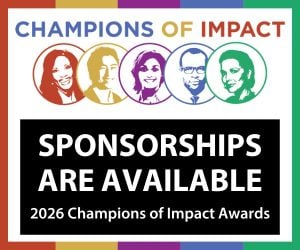During what began as a typical day at Indiana State University (ISU) in Terre Haute, Jarod Jones experienced something he will never forget.
On that cold morning two weeks ago, as Jones got out of his car and walked across a street headed to class, another young man driving a pickup truck shouted, “Hey, you stupid n*****,” then drove away from the area.
Jones could not believe what he was hearing, but remained calm and kept walking to his class.
“I just had to keep it moving and not even acknowledge him,” said Jones, a junior marketing major at ISU. “It reminded me that discrimination is still very real in America.”
Experiences like Jones’, with acts of discrimination against racial minorities taking place at college campuses and universities, is still common.
Last month, Cameron Ridle, a junior at Ball State University was walking down a hallway in the campus’ communications building with classmates when they saw a digital screen and noticed the image of a stick figure hanging from a noose with the word “Black” next to it being displayed.
“We were thinking, ‘is this supposed to be a threat? Or is someone just playing?’ Either way, this is wrong,” Ridle said. “Whoever created that image put it in a place where they knew it would be noticed.”
Fortunately, the image could not be seen for long, because the digital screen refreshes itself every 10 minutes. Ridle, a journalism student, took a photo of the image before that happened, and placed a story about the image on the student-run radio station’s website.
“The university released a statement saying it does not condone racism,” Ridle said. “We know the university does not embrace racism. What we need to do is tell people why the image is wrong.”
Although some students may believe discrimination is no longer a major problem, it is still a significant challenge on college and university campuses where minorities are underrepresented.
Some of the most common forms of discrimination on campuses include verbal comments; offensive visual images and exclusion from certain campus events, according to a recent report from the California-based Higher Education Research Institute.
That report, based on a survey of more than 4,000 students, demonstrated that 60 percent of minority students reported discrimination on campuses with minority enrollments of less than 20 percent.
At the most diverse institutions, with minority enrollment of at least 36 percent, the number of those facing discrimination fell to 45.8 percent.
Experts say these numbers show that the best way to prevent discrimination at colleges and universities is to make those institutions more diverse.
“Improving the diversity of a campus is the first step,” said Sylvia Hurtado, director of HERI and co-author of the study. “It is also important to work to improve interracial relations to build students’ skills for citizenship in a multicultural society.”
Hurtado also called on campus administrators to “be aware of their racial climate and the challenges” that their underrepresented students face.
ISU has a policy that “prohibits all types of discrimination,” according to Bonita Odom McGee, director of the university’s Office of Equal Opportunity and its affirmative action compliance officer.
McGee noted that some students come to the campus after being used to living around only people who are like them.
“Sometimes it’s not necessarily a position of discrimination, but it’s a lack of knowledge,” she said. “That is why we have programming that not only helps students get used to the campus, but also get to know students from different cultures.”
Joan Todd, executive director of public relations at Ball State, said the university has made “great strides” to increase diversity, increasing students from underrepresented minorities in its freshman class from 8.6 percent in 2006 to 15.9 percent this year.
“We want to maintain – and nurture – a culture where everyone is welcome and perspectives from all backgrounds are respected and valued,” Todd said. “Respect for everyone and all perspectives is the bedrock of a learning community and we will do all we can to ensure a welcoming culture.”
Ball State also has a Bias Response Team made up of people from offices within the Division of Student Affairs and Recreation Services, as well as faculty.
Neither Jones nor Ridle have expressed bitterness about their experiences, and instead want to use them to shine a light on the stubborn scourge of racism in the 21st century.
“We’ve come too far as a society for discrimination to sill occur,” Jones said. “It’s just sad that some people still think like that and say mean things. What we need to do now is change the mindset of those people.”
Ridle agreed, adding, “The time has come not just to react and be angry when these incidents happen, but take a proactive look at this and ask ourselves, “Why are people doing this? What will it take to get them to stop the behavior in the future?”




